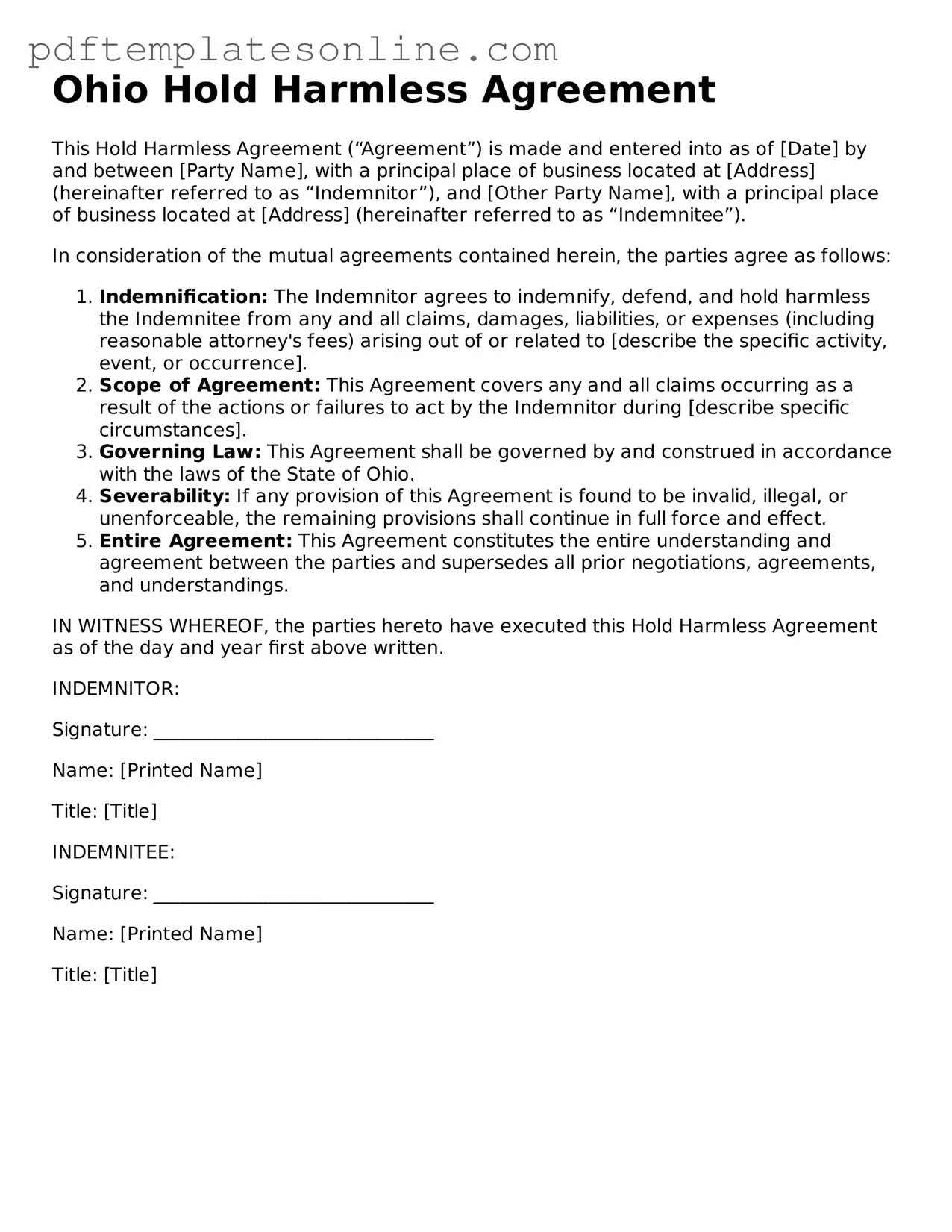Official Ohio Hold Harmless Agreement Document
A Hold Harmless Agreement in Ohio is a legal document that protects one party from liability for any injuries or damages that may occur during a specific activity or event. This agreement is often used in various contexts, such as rental agreements, events, or business contracts. By signing this form, parties agree to assume the risks involved and release the other party from any claims related to those risks.
Access Hold Harmless Agreement Editor Now
